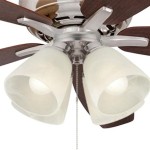Ceiling-Based Light in Revit: A Guide
Ceiling-based light fixtures are a crucial component of architectural design, providing illumination and creating a desired ambiance in interior spaces. In Revit, ceiling-based light fixtures can be seamlessly integrated into building models, enabling architects and designers to explore lighting scenarios and achieve optimal results.
Types of Ceiling-Based Light Fixtures
Revit offers a wide range of ceiling-based light fixtures, each with its unique characteristics:
- Recessed Lighting: Fixtures that are installed flush with the ceiling, providing diffused and uniform lighting.
- Surface-Mounted Lighting: Fixtures that are mounted directly onto the ceiling surface, creating a more decorative or industrial look.
- Pendant Lighting: Fixtures that hang from the ceiling, providing focused or ambient lighting.
- Linear Lighting: Fixtures that are long and narrow, often used for accent lighting or general illumination.
Parameters and Properties
Ceiling-based light fixtures in Revit have various parameters and properties that can be adjusted to suit specific design requirements:
- Fixture Type: Specifies the type of fixture, such as recessed, surface-mounted, or pendant.
- Geometry: Defines the shape and size of the fixture, including its dimensions and number of lamps.
- Materials: Determines the material used for the fixture's housing and other components.
- Light Output: Sets the intensity and distribution of the light emitted by the fixture.
- Electrical Properties: Specifies the voltage, wattage, and other electrical characteristics of the fixture.
Advantages of Using Ceiling-Based Light in Revit
Utilizing ceiling-based light fixtures in Revit offers several advantages:
- Accuracy and Precision: Revit enables precise placement and modeling of light fixtures, ensuring accurate light distribution and realistic rendering.
- Flexibility: Revit's parametric modeling capabilities allow for easy modification of light fixture parameters, providing flexibility in design exploration.
- Realistic Visualization: Revit's rendering engine provides realistic visualizations of lighting scenarios, helping designers visualize the impact of light on interior spaces.
Conclusion
Ceiling-based light fixtures play a vital role in architectural design, and Revit provides a powerful toolset for modeling and analyzing these fixtures. By understanding the types, parameters, and advantages of ceiling-based light in Revit, architects and designers can create effective and aesthetically pleasing lighting solutions for their projects.

Revit Content Lighting

Ceiling Based Lighting Revit 2024 3d Model Cgtrader
Bim Objects Free Lighting Ceiling Mounted Bimobject

Solved Placing Lights Autodesk Community Revit S

Revitcity Com Object Recessed Cans Ceiling Light

Revitcity Com Object Square Ceiling Light

Revitcity Com Object Modern Ceiling Chandelier

Ceiling Based Downlight Using Ies File From Manufacturer
Revit Recess Led Striplights

6 Tips To Make The Most Out Of Your Lighting Revit Families








